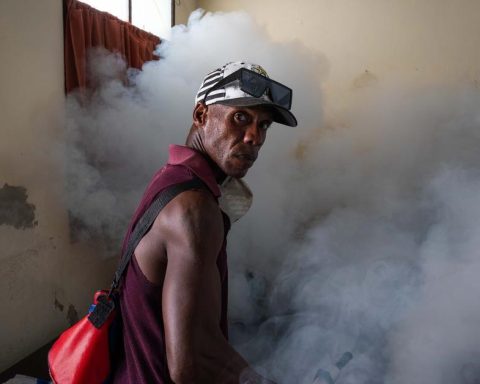Rio de Janeiro/Madrid/Brazil’s Health Ministry said Thursday it had registered a case of congenital abnormality in a baby born to a woman who was pregnant when she contracted the Oropouche virus, a disease that has caused at least two deaths and 7,286 infections in the country so far this year.
The baby, who was born with genetic abnormalities “associated with vertical transmission (from mother to child) of Oropouche,” died last week in the Amazon state of Acre after 47 days of life, according to a statement from the Ministry of Health.
According to the statement, her 33-year-old mother developed rashes and fever in the second month of her pregnancy, and laboratory tests she underwent after delivery confirmed she had contracted the Oropouche virus.
Laboratory tests performed on tissue samples from the baby, who was born with microcephaly, joint malformations and other genetic abnormalities, identified genetic material from the virus.
The studies ruled out other diagnostic hypotheses for the abnormalities.
According to the Ministry of Health, the studies ruled out other diagnostic hypotheses for the anomalies.
Although this would be the first case of congenital anomaly associated with vertical transmission of the virus, the note clarifies that further investigations are still necessary to confirm the direct correlation between Oropouche’s infection and the anomalies.
Various scientific studies have shown that the Zika virus has caused birth defects in babies of women who contracted the virus while pregnant.
The so-called Oropouche fever – whose name comes from Vegas de Oropouche, in Trinidad and Tobago, where it was detected in 1955 – is an infection caused by the Orthobunyavirus Oropoucheense virus (OROV), which is transmitted by insects such as the sandfly (Culicoides paraensis) or the mosquito Culex quinquefasciatas, mainly in endemic regions.
The number of cases of the disease in Brazil jumped from 900 in the twelve months of 2023 to 7,286 so far this year, of which 80% are in endemic areas. Following the registration of two deaths in Brazil, the first in the world, and the confirmation of cases of the disease in other countries such as Bolivia (356), Colombia (74), Cuba (74) and Peru (290), the Pan American Health Organization issued an epidemiological alert this week.
The symptoms of the disease are similar to those of dengue, with fever, headaches, muscle and joint pain, and occasionally with vomiting and diarrhea. In Cuba, in fact, and according to medical sources revealed to 14ymedio, The health authorities instructed to diagnose patients presenting these symptoms as “acute febrile syndrome.”
Earlier this month, Cuba’s Ministry of Public Health admitted at last –after this newspaper discovered the presence of the virus on the streets of Havana despite the silence of the authorities – that the Oropouche cases had spread to all 15 provinces of Cuba.


















